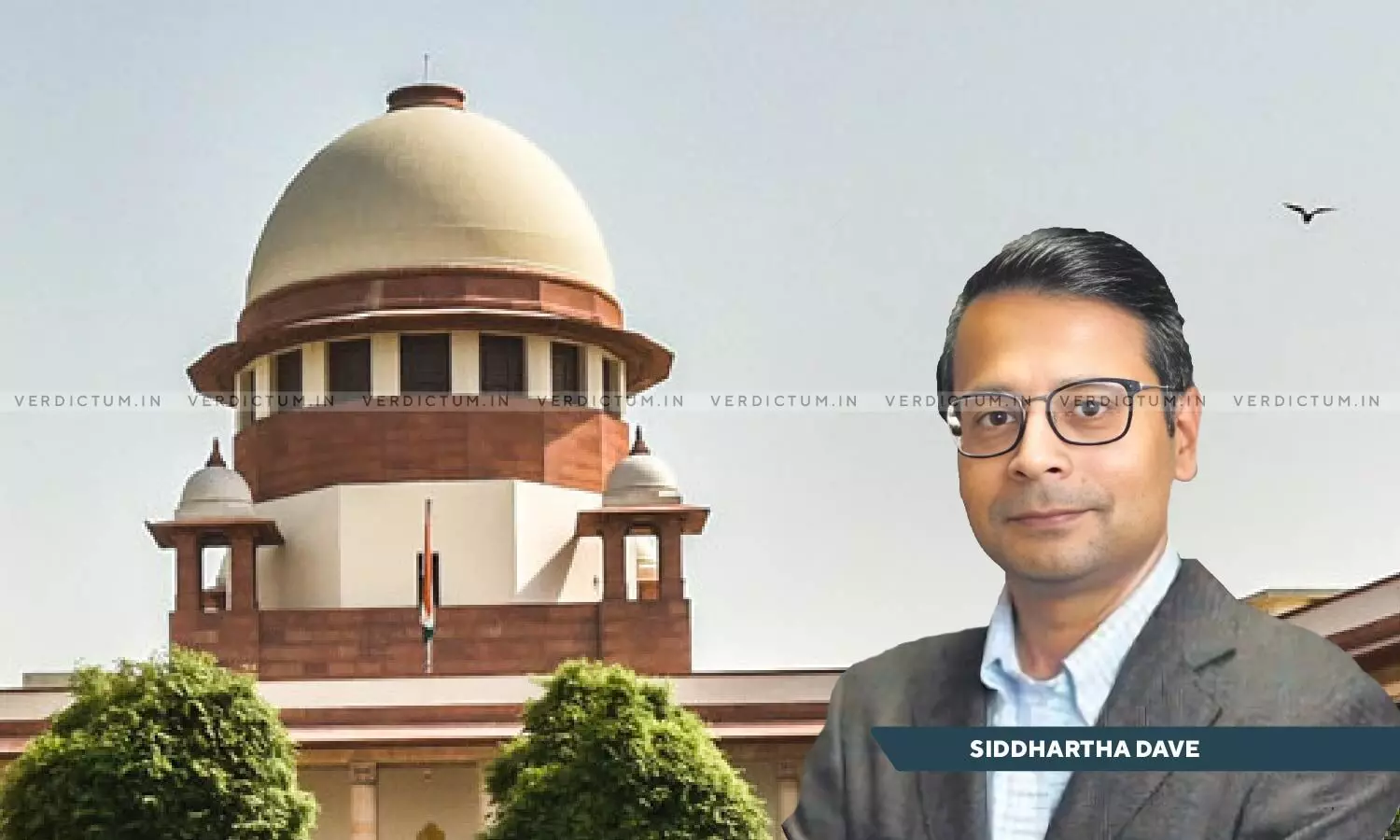
Justice S Muralidhar's Elevation To Apex Court Would Have Resulted In Outsized Representation Of Delhi HC, Great Disservice To Other High Courts: Senior Advocate Siddhartha Dave
 |
|The elevation of Justice S Murlidhar to the Supreme Court would have resulted in a disproportionate representation of the Delhi High Court in the Supreme Court, as per Senior Advocate Siddhartha Dave. In a column written by him in a newspaper, he has also said that the same would have been a "great disservice" to other High Courts, which have a larger sanctioned strength than the Delhi High Court, and also High Courts that are presently unrepresented in the Supreme Court.
Justice Muralidhar retired as the Chief Justice of the Orissa High Court on August 7, 2023. The Supreme Court Collegium had recommended the transfer of Justice Muralidhar from Orissa High Court to the larger Madras High Court as its Chief Justice in September, 2022. However, this recommendation was later withdrawn since the Centre did not act on the recommendation. Justice Muralidhar, whose parent High Court is the Delhi High Court, was transferred as a Judge of the Punjab and Haryana High Court in February, 2020, from where he was appointed as the Chief Justice of the Orissa High Court.
It was alleged by some that the Centre was miffed with Justice Muralidhar because he headed a bench that criticised the Delhi Police for its handling of the Delhi Riots. After his retirement as the Chief Justice of Orissa High Court last month, retired Supreme Court Judge, Justice Madan Lokur, Senior Advocate Fali Nariman and Senior Advocate Sriram Panchu had authored a column in the Indian Express titled- "A question for the collegium: Why was Justice S Muralidhar not brought to the Supreme Court?". The present column of Sidhartha Dave is in the nature of a response to the said column.
"I am sure the Collegium had its reasons for not recommending Justice Muralidhar for elevation; it would not be my place to speculate on them. The article questioning the decision misses an obvious point: Had Justice Muralidhar been appointed to the SC, the number of judges from the Delhi High Court would have increased to five. It already has the highest representation in the SC", Dave writes.
Dave states in the column that presently, there are eight High Courts which do not have representation in the Supreme Court viz. Rajasthan High Court, Orissa High Court, Jharkhand High Court, Jammu and Kashmir High Court, Tripura High Court, Manipur High Court, Meghalaya High Court and Sikkim High Court.
Dave writes that the Allahabad High Court with the highest sanctioned strength of 160 judges is presently represented by only three judges in the Supreme Court while the Bombay High Court with sanctioned strength of 94 judges is represented by three judges and the Punjab and Haryana High Court with the third-highest sanctioned strength of 85 judges is represented by only two judges. He points out that though the Madras High Court has a sanctioned strength of 75 judges, it is represented by only one judge in the Apex Court while Delhi High Court with a sanctioned strength of 60 judges is presently represented by four judges.
The Senior Advocate highlights that the recent appointments in the Supreme Court fulfil the desirability of having representation of all states and appointments from the Bar were also made to ensure appropriate representation.
"The SC is a kaleidoscopic representation of the country as a whole, encompassing metropolitan cities, smaller towns and villages. It is in the true sense, a Supreme Court of and for India. It is represented by judges who come from various sections of society, not necessarily limited to metropolitan cities", he writes.
He also states in the column that the Supreme Court is a kaleidoscopic representation of the country as a whole, encompassing metropolitan cities, smaller towns and villages and that it is represented by judges who come from various sections of society, not necessarily limited to metropolitan cities.
"The Collegium, at present, consists of the Chief Justice of India and four senior-most judges, three of whom would hold the office of the Chief Justice of India in the future. It is impossible to imagine that the present Collegium would have an oblique motive or reason for not elevating Justice Muralidhar", Dave writes in the column.
Dave also says that the opinion of a citizen or a group regarding the suitability of appointment of any particular candidate to the Supreme Court, cannot overshadow the wisdom of the Collegium.